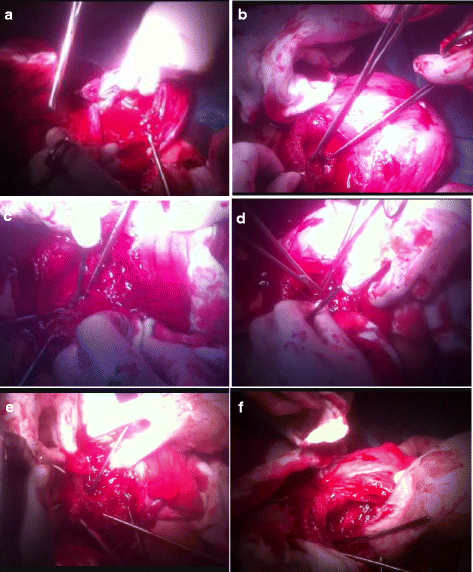The cervix as a natural tamponade in postpartum hemorrhage caused by placenta previa and placenta previa accreta: a prospective study
- PMID: 26559634
- PMCID: PMC4642648
- DOI: 10.1186/s12884-015-0731-9
The cervix as a natural tamponade in postpartum hemorrhage caused by placenta previa and placenta previa accreta: a prospective study
Abstract
Background: Placenta previa and placenta accreta carry significant maternal and fetal morbidity and mortality. Several techniques have been described in the literature for controlling massive bleeding associated with placenta previa cesarean sections. The objective of this study was to evaluate the efficacy and safety of the use of the cervix as a natural tamponade in controlling postpartum hemorrhage caused by placenta previa and placenta previa accreta.
Methods: This prospective study was conducted on 40 pregnant women admitted to our hospital between June 2012 and November 2014. All participating women had one or more previous cesarean deliveries and were diagnosed with placenta previa and/or placenta previa accreta. Significant bleeding from the placental bed during cesarean section was managed by inverting the cervix into the uterine cavity and suturing the anterior and/or the posterior cervical lips into the anterior and/or posterior walls of the lower uterine segment.
Results: The technique of cervical inversion described above was successful in stopping the bleeding in 38 out of 40 patients; yielding a success rate of 95%. We resorted to hysterectomy in only two cases (5%). The mean intra-operative blood loss was 1572.5 mL, and the mean number of blood units transfused was 3.1. The mean time needed to perform the technique was 5.4 ± 0.6 min. The complications encountered were as follows: bladder injury in the two patients who underwent hysterectomy and wound infection in one patient. Postoperative fever that responded to antibiotics occurred in 1 patient. The mean duration of the postoperative hospital stay was 3.5 days
Conclusions: This technique of using the cervix as a natural tamponade appears to be safe, simple, time-saving and potentially effective method for controlling the severe postpartum hemorrhage (PPH) caused by placenta previa/placenta previa accreta. This technique deserves to be one of the tools in the hands of obstetricians who face the life-threatening hemorrhage of placenta accreta.
Trial registration: ClinicalTrials.gov NCT02590484 . Registered 28 October 2015.
Figures

References
-
- Royal College of Obstetricians and Gynaecologists (RCOG) Green-top Guideline No. 27: Placenta praevia, placenta praevia accreta and vasa praevia: diagnosis and management. London: RCOG; 2011.
Publication types
MeSH terms
Associated data
LinkOut - more resources
Full Text Sources
Other Literature Sources
Medical

